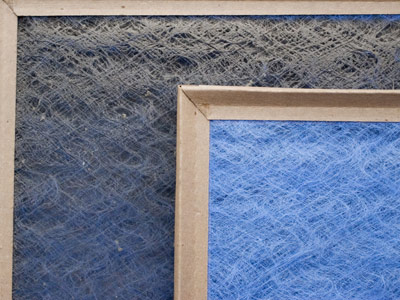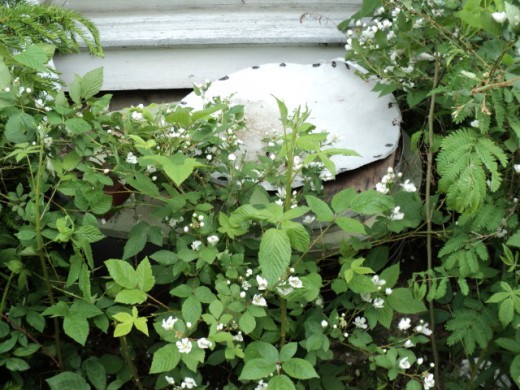15 Better Ways How You Can Keep Your Air Cool this Summer in Your House
Below are 15 tips and tricks to get the best results from your A/C unit this summer. Most of these tips and tricks are simple, and you can do them at home. For more drastic money saving tips and tricks, consult your local A/C & R tech and let them come do a inspection of your home. Most will do so, and can bring some really cool tools and gadgets, such as thermal imaging cameras, to show you where heat and cooling is escaping from your home. They can also show you more efficient alternatives, whether its replacing your unit completely, or just a few minor changes to make your system more efficient.

1. Keep Your Air Filter Clean.
Keeping your air filter clean helps keep the air circulating, which helps keep your house cool. Dirty filters restrict the airflow, making your system work harder as well. If you have pets, you might need to check your air filter more regularly. Most agree that you should check your air filter at least once a month, and replace or clean when dirty, usually between 30-90 days.
2. Change the Settings from AUTO to FAN ON.
Change the settings from AUTO to FAN ON. This keeps the indoor fan running non-stop. The A/C unit will still cycle when cooling is needed, and the constant air circulation through out the house with the fan running helps keep the air in the house cooler, as well as keeps it “fresh”.

3. Wash the Condenser Coil Yearly.
If you haven’t washed your condenser coil recently, you should probably do it this year. Doing so will keep it from running hot, and that helps it work more efficiently. Working more efficiently means you get to save money, and your house will cool faster and easier.
4. Close Some Vents in Your Home
Close some of the vents in your house in “Warm Rooms”. Closing the vents in rooms that always seem to be warm, and not in use, will allow the system to cool the rest of the house easier than just running constantly trying to cool just one room. If you have 2 or more story’s, close the lower level vents and open the ones up upstairs to get better airflow into the warmer parts of your house.

5. Keep Your Doors Open.
This is important if you have return air ducts in hallways, as they need to pull the heat from the rooms and cant if the door is closed. Also, if there isn’t a gap between the door and the floor, perhaps because of carpeting, the air returns won’t be able to pull the heat out either, so keeping the door open or cracked will allow the system to efficiently cool the room.
6. Never Turn the System Off When You Leave.
Never turn the A/C off when you leave. If you do so, the entire house heats up, then the system has to work double hard to cool the house back down. There is no real money saved (unless you’re going to be gone for quite awhile, as in more than a day). Usually the amount of electricity saved is wasted on the cooling costs. Turing the system to a warmer setting when leaving is more ideal, as the system will have to work less to keep the house at a little warmer temperature, and is not hard to bring back down when you return home.
7. Never Turn Off and On Your System.
Never turn off the A/C and back on in less than 5 minutes. This kind of action will cause the compressor to trip breakers, short circuit, blow fuses, or errantly damage your unit. Your system should have a time delay in the event of a power outage, but to make sure, have a qualified A/C & R tech take a look at your setup.

8. Keep the Blinds and Curtains Closed.
Keep all the blinds and curtains closed. This will help keep heat and coolness from escaping and help insulate your home. Also, a working attic fan can help keep the heat in your attic at a minimal level, which helps keep your house cooler, and makes your system work more efficiently.
9. Never Add Refrigerant.
Never add refrigerant to your system. If your system does need some, then you have a leak, and that needs to be taken care of immediately by a trained professional. Refrigerant leaking and releasing refrigerants into the air can also be illegal.
10. Check Your System With a Thermometer.
Check your system with a thermometer. There should be a 15-20 degree drop when you check the indoor coil at the air handler. If the air isn’t within that range, then there is a problem, and the system isn’t working to its full efficiency. Too high of a drop, as in 20 degrees or more, could mean a lack of air flow, or that your just low on refrigerant, or a possible refrigerant leak. Not enough of a drop could mean too much air flow, or a dirty set of coils, or low on refrigerant.

11. Never Cover Your System.
Never cover an A/C unit with plastic or with an airtight cover. This will cause the unit to rust. This will also prevent the system from working and cooling properly, because the heat will not be able to be dispersed on the outside of the home.
12. Never Pee on Your System.
Never let pets (wild or your own) urinate on the unit. This can cause corrosion, and that can lead to refrigerant leaks. Also, the urination can get inside the system, and cause it to begin to have a awful smell, which is very difficult to get rid of.

13. Keep Grass and Weeds Away From Your System.
Allowing these plants (and any plants for that matter) to grow beside and inside the unit will diminish air flow and circulation, and can also cause rust and corrosion.
14. Never Build Onto or Over Your System.
Although this should be common sense, a lot of people don’t take into consideration what building something like a deck over an A/C unit does. This can trap heat in the unit and cause it to overheat, as well as restricts movement around the system in the event that service and repairs are needed. A/C units work best with nothing obstructing the airflow around them.

15. Check Your Fuses, Circuit Breakers, and Wires.
If your fuses, circuit breakers, or wires are hot to the touch, they need to be replaced. If they are hot, then you probably have a sizing problem, or a bad electrical connection. The heat is because there is more electricity than the fuse, breaker, or wire can handle and is becoming overloaded. A properly loaded electrical circuit doesn’t produce lots of heat because the electricity can properly move through the circuit. When it can’t, the electricity builds up, causing heat.
Some Helpful Links
- How Does an AC System Work?
We all know what a A/C system is, where its located, and what it does. But do you know how it works? How it cools the air, then distributes it throughout your home or office? - How Does an AC System Work?
We all know what a A/C system is, where its located, and what it does. But do you know how it works? How it cools the air, then distributes it throughout your home or office? - Common A/C Problems (and Solutions to Them)
Having A/C problems alone are a total bummer, but having them during summer can be almost catastrophic. Prevent your system from going out, and preform a check up and some basic maintenance today to prevent your A/C unit from dying tomorrow. - Tips to Reduce Your Heating Bill
This is a posting on some of the ways to help reduce your carbon footprint, as well as reduce your heating and electrical bill. With 10, simple, you can do it at home, tips, you should be able to reduce your heating bill as much as 20%, maybe more! - Air Conditioning (AC) Repair in Destin, Santa Rosa Beach, Miramar, Fort Walton Niceville
A Superior is a full service air conditioning and heating repair company. Servicing Panama City, Destin, Fort Walton, Freeport, Crestview, Santa Rosa Beach and Niceville.








